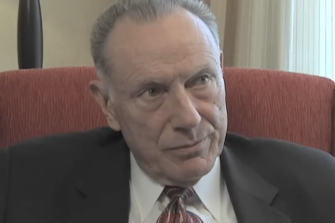Lessons for directors from the UK Post Office Horizon Scandal
A recent television documentary and related drama series highlight the grave miscarriage of justice associated with the long-running British Post Office Horizon IT scandal. Unacknowledged faults in software used by the Post Office for accounting and financial management led to discrepancies in sub postmasters’ accounts. Based on this faulty data, the Post Office then wrongly accused sub postmasters of theft, fraud and false accounting.
Between 1999 and 2015, the Post Office prosecuted over 900 sub postmasters. Prison terms, loss of homes, savings, livelihoods and community respect followed. There were at least four suicides attributed to the resultant human misery.
In the public domain, the Post Office’s senior management have been depicted as the villains, but what part was played by the Post Office board? In January, the UK Institute of Directors published a piece by Karl West (The Post Office Horizon Scandal – lessons for directors) that attempted to answer this question.
West’s analysis pointed directly to the failure of governance by successive boards of Post Office Limited (POL), a company wholly owned by the UK government:
Initially, it was a lack of interrogation of the information, misplaced trust in a shiny new IT accounting system and the onerous penalties dished out to those sub postmasters who were flagged by the system. POL’s position became entrenched and soon snowballed until it was too late to admit that, maybe, it got it wrong – even in the face of mounting evidence that the IT system was full of bugs and errors.
Instead of slamming on the brakes, POL and its board doubled down, which led to further flouting of good governance principles. This included covering up and destroying evidence, racial profiling of those it was seeking blame and then rewarding senior executives with large bonuses for complying with the statutory Inquiry into their own organisation’s bad behaviour.
In his article, West explores each of these issues in some depth, asking:
Where was the board? Why did it not prevent the management team from continuing to dig a hole for the organisation? Why did it not insist that the underlying issues were dealt with in an effective and transparent way?
Paula Vennells, the Post Office chief executive for much of the period when the Horizon-related issues were becoming more public, defended the board to the parliamentary Select Committee looking into the matter in 2020. She proposed that it was reasonable for the board to accept the assurances of Fujitsu, the software developers, that the Horizon IT system was fundamentally sound.
West came to a different conclusion:
Fundamentally, it would appear that the board lacked the ability to exercise informed, independent judgement over the functioning of their key IT system. In the absence of that capability, and impressed by the technical sophistication of Fujitsu, it chose to place faith in the competence of their IT provider rather than a gathering body of contradictory evidence. When combined with a defensive mindset that eschewed transparency, the consequences were catastrophic.
West further described the Horizon IT scandal as a textbook example of how the weak governance of technology can pose existential risks for an organisation, especially if it takes place in an environment in which board members are either unwilling or unable to, or just do not grasp the full implications of their legal duty to promote the best interests of the company.
The Statutory Inquiry into the Post Office Horizon scandal will not be concluded until July this year. Already, however, what is known highlights the critical role of governance in preventing systemic failures and safeguarding organisational integrity. There are, and will be more, stark lessons for directors on the need to ensure better oversight, transparency and accountability in their organisations.
How to think better
Most of the BoardWorks team subscribe to the Shane Parrish-led Farnham Street Blog. Every week it is a must-read, as much of it is directly relevant to boardroom effectiveness, such as a recent piece entitled The Skill You’ve Never Been Taught: How To Think Better.
Posing the question ‘How can we learn to think better?’ Parrish begins with extracts from William Deresiewicz’s 2009 lecture ‘Solitude and Leadership’ that tell us how we don’t learn to think.
Deresiewicz debunked the myth of multi-tasking. It is now well known that people do not multi-task effectively because of the cognitive costs of switching from one task to another. However, Deresiewicz highlighted research that, even 15 years ago, indicated the more people multitask, the worse they are, not just at other mental abilities, but at multitasking itself. They are more disorganised mentally and more distractible. In terms of their mental filing systems, they are worse at what might be called ‘mental filing’; at being able to keep information in the right conceptual boxes and to retrieve it quickly:
Thinking means concentrating on one thing long enough to develop an idea about it. Not learning other people’s ideas, or memorizing a body of information, however much those may sometimes be useful. Developing your own ideas. In short, thinking for yourself. You simply cannot do that in bursts of 20 seconds at a time, constantly interrupted by Facebook messages or Twitter tweets, or fiddling with your iPod, or watching something on YouTube.
Deresiewicz went on to say that his first thought is never his best. It is always someone else’s—what he has already heard about the subject; always the conventional wisdom. It is only by concentrating, sticking to the question, being patient, letting all parts of his mind come into play, giving his brain a chance to make associations and draw connections, that he can arrive at an original idea. Then, he says, he needs time to think about that too, in case even that idea doesn’t turn out to be very good.
There are obvious lessons in this for directors. If your best thinking requires slowing down and concentrating, are you and your fellow directors making enough time to think about the challenges facing your board—in between meetings, in meeting preparation and in the conduct of board meetings? Is your board getting your best thinking or are you just skimming at a superficial level?
Parrish goes on to extoll the virtues of writing during the thinking process. In short, the process of writing helps you think through an idea. It forces you to test your thinking:
Good writing gives poor thinking nowhere to hide. It’s easy to read and flows. Poor writing is a drag as your mind is forced to sift through the obfuscation to try and pull out the right information. Poor writing is a strong indication of poor thinking.
The importance of peripheral vision
Numerous tributes were posted following the recent death of Daniel Kahneman who, along with fellow psychologist Amos Tversky, upended traditional economic assumptions that people act rationally. Among them, Laurence J. Stybel and Maryanne Peabody penned a blog titled You know what you know, pointing to Kahneman and Tversky’s’ warning that we do not approach knowledge with impartiality.
Kahneman’s book Thinking Fast and Slow (2011), that popularised much of the pair’s groundbreaking work, makes a distinction between two systems in our brain. System 1 is fast, instinctive, and emotional. System 2 is slower and more logical.
Consistent with this proposition, Stybel and Peabody also cite Alex Edmans, a professor of finance at the London Business School who, they note, cautions that knowledge is not fact. When you think that you know what you know (and are thereby vulnerable to confirmation bias) try to ascertain what is factual. First, look for counter-facts and secondly for evidence that supports what you think.
Taking these two steps, Stybel and Peabody argue, allows your System 2 thinking time to weigh in on System 1’s tendency to confirmation bias.
Staying with the confirmation bias theme, the authors argue that, as the speed of business increases, leaders’ peripheral vision decreases. Leaders focus on direct competitors, customers, potential customers, and direct reports. Everything else is peripheral. Stybel and Peabody illustrate the dangers when corporate peripheral vision is lacking and offer advice on how you might go about improving your peripheral perspective.
The need to reevaluate acceptable risk
Matthew Scott writes that the way in which boards determine the appropriate level of acceptable risk for their company appears to be gaining importance in the current high inflation, high-interest rate environment. He suggests that corporate board members might want to reevaluate the risk assumptions they’ve already made about their business plans and determine whether those risks would still be acceptable following future changes in market conditions.
As an illustration, he describes the bet Hertz made when it decided to build the largest electric vehicle rental fleet in North America. After purchasing 60,000 EVs, customer demand fell short of expectations and the price of EVs unexpectedly fell. Forced to reverse its failed strategy and sell 20,000 of those EVs the company had to take a $245 million loss.
What was intended to be a bold move to capitalise on the popularity of EVs with car buyers, turned out to be a risky miscalculation. Electric car renters didn’t embrace electric vehicles with the same enthusiasm. While EV sales were trending up, EV rentals were not. Additionally, the “unthinkable” happened when EV automakers decided to cut prices to sustain sales levels, which hurt the resale value of the EVs that Hertz purchased.
Scott suggests boards should:
- determine acceptable risk. The board may need to agree on certain lines the company should not cross when seeking growth. For example, when gauging customer demand for a particular product—do you build inventory ahead of demand or use a “supply on demand” model? The board needs to be able to articulate their risk considerations to the CEO and management team.
- prepare for the worst-case scenario. The board must be willing to think that things may not go as planned. If the worst-case scenario for a strategy could inflict irreparable harm on investors and the company, it may not be worth the risk. If it goes ahead, the board and management should have a crisis management plan in place just in case.
- maintain succession plans for the CEO and board members. Figure there will be disagreements about how much risk is appropriate when operating any company, and because of that, someone may be forced to leave (Hertz has had four CEOs in the last five years).
The lessons about corporate culture that continue to flow from Boeing Corporation
Boeing, the American multinational aerospace corporation, continues to make the wrong kind of news on a regular basis.
The deadly failures of the 737 MAX aircraft were only the tip of the proverbial iceberg. Since then, there has been a door blowout, in-flight landing gear wheel problems, the 787 Dreamliner incident between Australia and New Zealand, news about pilot lack of confidence and a dead whistleblower. Unsurprisingly, competitor Airbus is gaining market share.
Jeffrey Parker has written about Boeing’s ongoing challenges and speculates about who has the responsibility to put things right: a regulatory agency such as the Federal Aviation Administration (FAA) or Boeing’s board? It seems Boeing’s operations, combined with mis-prioritisation by successive leaders, indicates a culture that has been derailed.
Parker suggests that the FAA can burden Boeing with the most restrictive and intrusive inspection programs they can come up with and it won’t solve the overriding culture problem. That is the problem that must be urgently addressed by the Boeing board. He suggests a set of questions the Boeing board needs to ask themselves:
- What is the connection between all the incidents that have occurred?
- What has changed in the last 20 years that put Boeing where it now stands?
- What feedback from employees has been incorporated into decisions by senior leadership?
- What do Boeing employees say about coming to work at Boeing? Are they proud to be a part of Boeing?
- How many Boeing employees would lay down on a railroad track for Mr Calhoun (the current CEO)?
Parker considers these questions important because he contends that Boeing is suffering from a cultural misalignment affecting the entire company, which can only be fixed by a change in the culture that Calhoun seems unable to address.
This is the duty of the board, and many case studies already underway at business schools across the country will not reflect well on the mindset, and possibly the culture, of the Boeing board itself.
Is your board actively focused on the health of your organisation’s culture?








